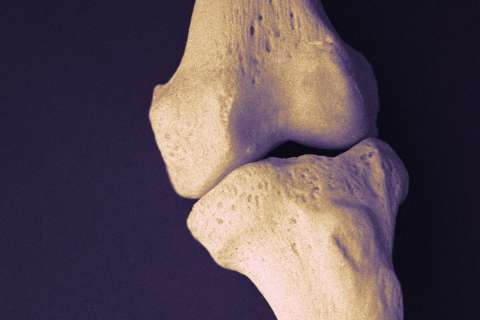Dear Doctors: I was in a car accident, and an X-ray showed I had two broken ribs. A second X-ray taken a month later showed I also had a cracked rib. Why didn’t that show up the first time? Why isn’t there more that can be done for a broken rib other than being told to rest? It’s very painful.
Dear Reader: Fractured ribs are one of the most common traumatic injuries. More than 300,000 people visit the emergency room each year with a broken rib, and up to 45,000 wind up spending time in the hospital as a result. The most common causes are a car accident, as happened in your case, or collisions during contact sports. Older adults, whose bones can become frail, are at increased risk of a rib fracture during a fall.
As with any bone in the body, ribs can be bruised, cracked or broken. When this occurs, the muscles and cartilage that hold the rib cage together can also be damaged. The most common site of a rib fracture is the outer curve of the rib, where the bone is weakest. The ribs in the middle of the chest are most likely to be broken. In severe trauma, it is possible for a broken rib to injure the lung. Breaks in the lower ribs can injure the spleen, liver or kidneys, which can be life-threatening.
Diagnosis begins with a physical exam, and can often also include an X-ray. A cracked rib, also known as an incomplete fracture, may not be immediately visible. It is only once the damaged bone has begun to heal, which involves the deposit of specialized cells known as osteoblasts, that the damage to the rib may become visible on an X-ray.
Symptoms of rib injury include localized pain that can be severe. The rib cage glides open a bit with each breath and flexes in response to motion, each of which can also trigger pain or discomfort.
The fracture you are now dealing with shows your rib cage was doing its job. It protected your heart, lungs, liver and other vulnerable tissues from the blunt-force trauma of the car accident. However, the architecture of the rib cage, a light and flexible lattice of bone, muscle and connective tissue, puts limitations on caring for a fracture. Your rib cage needs to be able to expand and contract in order to permit breathing. Unlike a broken arm or leg bone, fractured ribs cannot be stabilized in a cast.
The primary treatments for rib fractures are medications to help manage pain and inflammation and instructions to limit movement. Depending on the severity of someone’s injury and the number of ribs involved, healing can take from six weeks to several months. Once the initial pain has been managed, the challenge becomes limiting motion and activity so that the affected bones are not reinjured.
Recently, researchers have been looking into using an injectable adhesive to stabilize the broken bone. As healing takes place, the adhesive would be absorbed by the body. The approach remains in the research phase and is not yet available.
(Send your questions to [email protected], or write: Ask the Doctors, c/o UCLA Health Sciences Media Relations, 10960 Wilshire Blvd., Suite 1955, Los Angeles, CA, 90024. Owing to the volume of mail, personal replies cannot be provided.)





